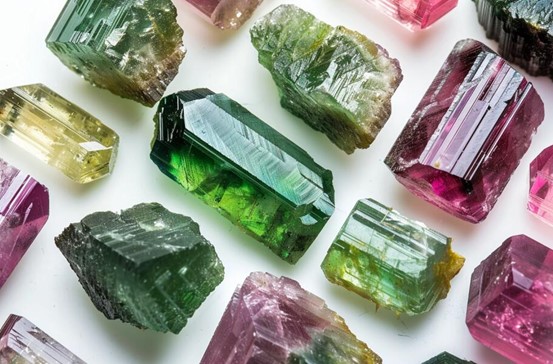Why Tourmaline Gemstones Are So Expensive?

Tourmaline gemstones have become increasingly popular and valued over the past few decades. But their rising popularity has also led to tourmaline commanding very high prices, especially for rare and high quality specimens. So what exactly makes this colorful gemstone so precious and expensive? There are several key factors.
Scarcity
One of the main reasons tourmaline can be so costly is its relative rarity. Tourmaline is not commonly found around the world compared to other gemstones like quartz or garnet. There are only a handful of significant tourmaline deposits that produce gem-quality material suitable for cutting. These include Brazil, Afghanistan, Nigeria, Mozambique, Madagascar, and California in the United States. Mining tourmaline is challenging due to the complex geologic conditions needed for it to form. This scarcity means there is not a huge supply available on the market. Limited availability translates to higher prices for the finer tourmaline specimens.
Difficult Mining
The mining process for tourmaline is very difficult compared to other gemstones. Tourmaline forms in slender crystals within fractures and spaces in igneous and metamorphic rock. These tourmaline crystals must be meticulously extracted by hand. Miners search for small “pockets” where gem-quality tourmaline has formed and carefully chisel out the individual crystals. This is very time consuming and inefficient compared to mining processes for other gems like sapphires or rubies. The intensive labor required to extract raw tourmaline crystals adds to its ultimate cost.
Variety of Colors
One of the most prized qualities of tourmaline is its diversity of colors. Tourmaline is unique in the gemstone world for displaying every color of the rainbow, often in a single gem. The most common and least expensive tourmaline gems are black. But as you move up the color spectrum, the prices increase substantially. Vivid greens, radiant reds, neon blues, and vibrant purples are far more valuable. Multi-colored tourmaline displaying two or more colors in a single stone commands the highest prices. These can surpass even the cost of diamonds. The broad palette of colors, especially in fine, saturated hues, makes tourmaline highly coveted and expensive.
Clarity Enhancements
Most tourmaline gems on the market today have been clarity enhanced through heating processes. Heating tourmaline dramatically improves the clarity by removing flaws and producing more vivid colors. Unheated tourmaline is extremely rare, especially in larger carat sizes needed for fine jewelry. Completely natural, untreated tourmaline sells for many times more than enhanced stones. Large flawless tourmaline gemstones over 5 carats can fetch over $10,000 per carat at auction. If it is an exceptionally rare color like red, the price jumps even higher. Getting treatment-free, top quality tourmaline drives the prices sky-high.
Demand from Collectors
Tourmaline has become a favorite among gem collectors over the past 20-30 years. Its incredible range and mix of colors, along with its growing rarity, make it highly sought after. Top collectors compete at auctions to acquire the best museum-quality tourmaline specimens for their private collections. This demand pushes the prices for fine tourmaline to astonishing levels. A collector is willing to pay much more for an exquisite tourmaline gem than the average jewelry consumer. Limited supply plus intense demand from collectors equals very expensive prices.
Luxury Brand Names
Another factor driving up tourmaline prices is the use of tourmaline in jewelry from top luxury designers. Brands like Tiffany & Co., Cartier, and Bulgari feature tourmaline in their high-end collections, often paired with diamonds. Consumers are willing to pay a premium just to own a piece of jewelry with a prestigious brand name. Even though the gemstone itself may not warrant the price tag, when set in designer jewelry, standard tourmaline can command several thousand dollars per carat. The brand name multiplies its perceived value.
Difficult Cutting
The cutting and polishing process for tourmaline is challenging and can result in significant gemstone loss. The hardness, crystal structure, and fragility of tourmaline make it prone to cracking, fracturing, and chipping during cutting. Master gem cutters have to work slowly and carefully to reveal the best color while minimizing weight loss. Because of this laborious process and high risk, the cost of fashioning raw tourmaline into polished gems needs to be recouped in the final selling price. Difficult cutting equals higher prices.
In short, tourmaline ticks all the boxes that make a colored gemstone highly valuable: rarity, beauty, demand, mining challenges, cutting difficulties, and use in luxury products. All of these factors converge to make tourmaline one of the most expensive gemstones today, sometimes even rivaling rare and coveted gems like emeralds and rubies. While common tourmaline can be affordable, the finest red, green, and multi-color examples with large sizes and perfect clarity will always command exorbitant prices.

